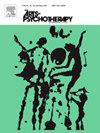亲子艺术疗法:通过“玫瑰色眼镜”方法加强父母对“好物体”的表征
IF 1.5
3区 心理学
Q3 PSYCHOLOGY, CLINICAL
引用次数: 0
摘要
亲子艺术疗法(PCAT)将二元心理治疗的原则与创造性的过程结合起来,以解决父母和孩子之间的关系困难。这种治疗方法通过艺术创作促进亲子关系的沟通和转变。哈雷尔(2022)提出的“玫瑰色眼镜”方法支持了这项工作,治疗师对父母的积极、综合立场旨在加强他们将自己视为孩子的“好对象”的表现。本文探讨了PCAT的理论和临床基础,更具体地说,治疗师如何培养父母的认知信任、心智化和反思功能,从而使他们更好地理解和支持孩子。一个详细的小插图说明了在解决一个收养的父母-孩子的复杂动态使用PCAT。艺术创作促进了关系修复和共同成长,这使父母能够在增加与孩子的情感联系的同时,克服内疚和沮丧的感觉。通过共同的创造过程,父母从批判性的自我感知转变为良好的父母表现,这有助于增强孩子的情绪弹性和自我表达。讨论的中心是治疗师在消极的关系动态中保持对父母的积极看法所面临的问题,并倡导使用艺术疗法来支持多维关系转变。通过采用“玫瑰色眼镜”的方法,治疗师可以促进积极的内在表征的恢复,从而增加亲子关系中的信任,并导致关系的成长和修复。本文章由计算机程序翻译,如有差异,请以英文原文为准。
Parent-child art therapy: Strengthening parents’ representations of the ‘good object’ through the ‘rose-colored glasses’ approach
Parent-Child Art Therapy (PCAT) integrates the principles of dyadic psychotherapy with creative processes to address relational difficulties between parents and children. This therapeutic approach fosters communication and transformation within the parent-child relationship through artmaking. The "rose-colored glasses" approach introduced by Harel (2022) underpins this work, where the therapist’s positive, integrative stance toward parents is aimed at strengthening their representation of themselves as a "good object" for their child. This paper explores the theoretical and clinical foundations of PCAT, and more specifically how therapists can cultivate epistemic trust, mentalization, and reflective functioning in parents, thus enabling them to better understand and support their children. A detailed vignette illustrates the use of PCAT in addressing the complex dynamics of an adoptive parent-child dyad. Artmaking facilitated relational repair and mutual growth, which enabled the parents to navigate feelings of guilt and frustration while augmenting their emotional connection with their child. Through shared creative processes, the parents transitioned from a critical self-perception to a good parental representation that contributed to bolstering the child’s emotional resilience and self-expression. The discussion centers on the issues therapists face in maintaining a positive view of parents amidst negative relational dynamics, and advocates for the use of art therapy to support multidimensional relational transformation. By adopting the "rose-colored glasses" approach, therapists can facilitate the restoration of positive internal representations that increase trust within the parent-child relationship and can lead to relational growth and repair.
求助全文
通过发布文献求助,成功后即可免费获取论文全文。
去求助
来源期刊

Arts in Psychotherapy
Multiple-
CiteScore
3.20
自引率
11.10%
发文量
66
期刊介绍:
The Arts in Psychotherapy is a dynamic, contemporary journal publishing evidence-based research, expert opinion, theoretical positions, and case material on a wide range of topics intersecting the fields of mental health and creative arts therapies. It is an international peer-reviewed journal publishing 5 issues annually. Papers are welcomed from researchers and practitioners in the fields of art, dance/movement, drama, music, and poetry psychotherapy, as well as expressive and creative arts therapy, neuroscience, psychiatry, education, allied health, and psychology that aim to engage high level theoretical concepts with the rigor of professional practice. The journal welcomes contributions that present new and emergent knowledge about the role of the arts in healthcare, and engage a critical discourse relevant to an international readership that can inform the development of new services and the refinement of existing policies and practices. There is no restriction on research methods and review papers are welcome. From time to time the journal publishes special issues on topics warranting a distinctive focus relevant to the stated goals and scope of the publication.
 求助内容:
求助内容: 应助结果提醒方式:
应助结果提醒方式:


